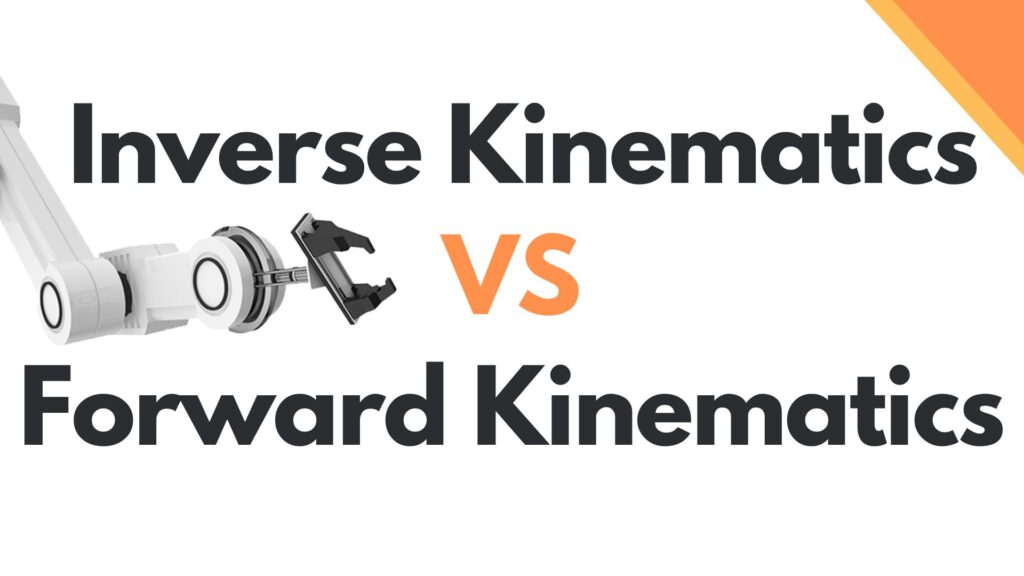
Forward Kinematics
Forward kinematics refers to the process of calculating the position and orientation of the end-effector (e.g., a robot’s hand or tool) based on the known joint parameters (angles, distances, etc.) of a robotic arm. In forward kinematics, you start with the joint variables and determine the resulting configuration of the entire system.
Example: Consider a simple 2D robotic arm with two joints:
- Joint 1: Angle θ1
- Joint 2: Angle θ2
Using forward kinematics, we can determine the position (x, y) of the end-effector by applying the following equations:
- x = L1 * cos(θ1) + L2 * cos(θ1 + θ2)
- y = L1 * sin(θ1) + L2 * sin(θ1 + θ2)
Here, L1 and L2 represent the lengths of the robotic arm segments.
Inverse Kinematics
Inverse kinematics is the process of determining the joint parameters needed to achieve a specific position and orientation of the end-effector. Unlike forward kinematics, which is a straightforward calculation, inverse kinematics can be more complex and may have multiple solutions or no solution at all.
Example: Given the desired position (x, y) of the end-effector, we need to calculate the joint angles θ1 and θ2. This involves solving the following equations:
- x = L1 * cos(θ1) + L2 * cos(θ1 + θ2)
- y = L1 * sin(θ1) + L2 * sin(θ1 + θ2)
Using trigonometric and algebraic techniques, we can find the values of θ1 and θ2 that satisfy these equations.
Key Differences:
- Direction:
- Forward Kinematics: Joint parameters ➔ Position and Orientation
- Inverse Kinematics: Position and Orientation ➔ Joint parameters
- Complexity:
- Forward Kinematics: Typically simpler, direct calculation.
- Inverse Kinematics: More complex, may have multiple or no solutions.
| Feature | Forward Kinematics | Inverse Kinematics |
|---|---|---|
| Direction | Known joint parameters ➔ Position | Desired position ➔ Joint parameters |
| Complexity | Direct and simpler | Often complex, with multiple/no solutions |
| Applications | Predicting manipulator positions | Motion planning and task-specific arm designs |
Applications:
- Forward Kinematics is used in robotics to predict the position of a manipulator, for animation, and control of robotic movements.
- Inverse Kinematics is crucial in robotics for motion planning, animation of characters in computer graphics, and designing robotic arms for specific tasks.
Understanding both forward and inverse kinematics is essential for the design and control of robotic systems, as well as in fields like animation and biomechanics.
